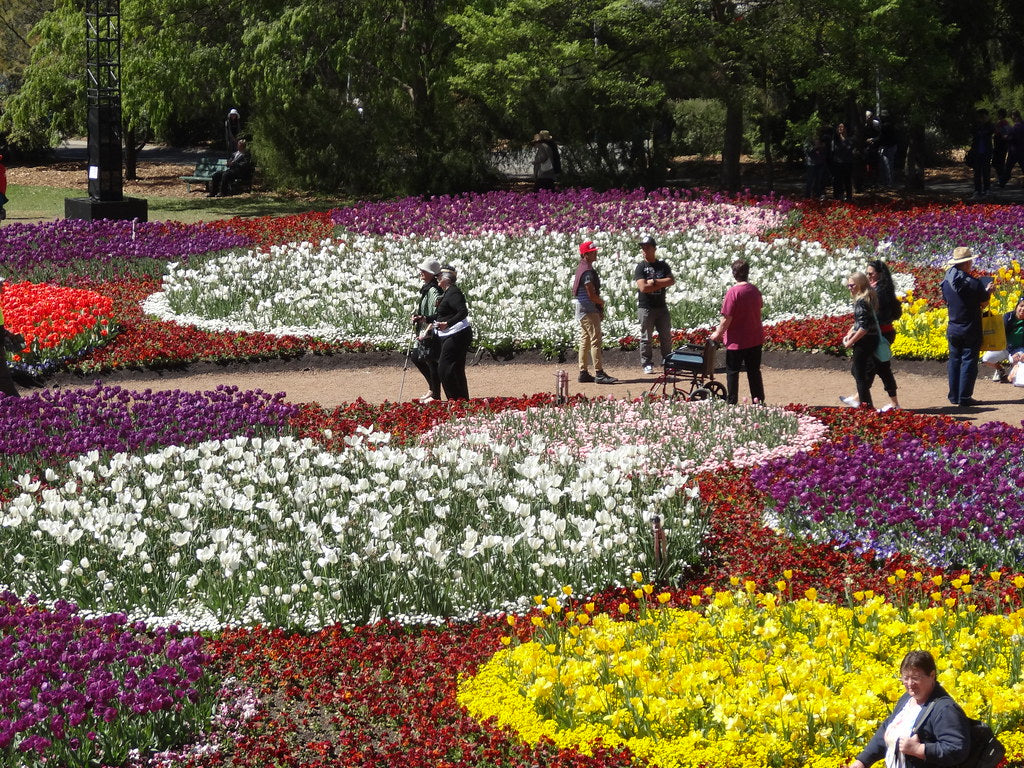March marks the start of a new season. The melting snow gives way to colorful flowers, filling the air with that fresh, floral scent. The once-bare trees become populated with leaves, and the grass starts regaining its green and earthy colors. We start thinking about good weather and, eventually, the transition into summertime. There’s a lot of good that comes in the spring, and that’s why we’d like to share with you some different springtime traditions celebrated around the world. Although large public celebrations have been sparser in these last couple of challenging years, remembering and reading about these traditions is a good way to experience them.
We’ve all heard of St. Patrick’s Day. The Chinese New Year—also known as their Spring Festival—took place on the 12th of February. Other wonderful traditions deserve recognition, too. We’re going to take you around the world to India, Mexico, Australia, and Poland to discover how different countries' traditions choose to celebrate the coming of spring!
POLAND, The Drowning of Marzanna

On March 21st, when spring arrives in Warsaw, Polish residents march toward a river, carrying a flaming doll on their shoulders through the city streets. The flaming doll is actually at the core of this springtime tradition—a symbol of the Polish goddess, Marzanna. Marzanna is known as the goddess of “winter, plague, and death,” so it’s only befitting that this goddess is burned. Her burning marks the end of winter and the coming of warmer, fairer weather. Back in medieval Slavic times, people understood the burning of the Marzanna doll as a way to protect themselves from her cold fury, which would bring good harvests for the spring. Although born out of superstition, the Polish still celebrate the folk tradition today.
The doll is crafted from straw and other flammable material (beads and ribbons are added for another nice touch), making it a bright beacon when paraded in the city! People who partake directly in the heart of this spectacle then take the Marzanna doll and ‘drown’ it in the river. Once the flames have been put out, the crowd carries the doll through the streets once more, this time with cheers and rejoice for the end of winter. Kids can be heard singing songs about the ‘burning of the witch’ as they help carry the doll.
INDIA, The Holi Festival

Would you believe that lighting something on fire isn’t exclusive to the Polish? You can find every color of the rainbow in the Indian tradition of Holi. The Holi Festival, also known as the “festival of spring” or the “festival of love,” usually occurs on the last full moon of the month, marking the end of the winter season. In Hindu culture, Holika (where Holi receives its name) was an evil demoness who was burned by the god Vishnu for her wicked ways.
The Holi Festival is practically an explosion of color, much like the spring season itself. During this festival, people dowse each other in dry powder and spray each other with colored water from water guns or water balloons. No one is safe or left dry during this occasion! When everyone’s done and completely colorful, families take time to celebrate with delicious foods, such as gujiya, mathri, and malpuas.
Good ol’ fashioned water fighting isn’t the only attraction in Holi. The night before the festival, people gather around a bonfire to recreate the burning of Holika. Like the Holi Festival, this viewing symbolizes the triumph over good and evil.
MEXICO, Festivale de Primavera

Although the weather in Mexico can be pleasant all year round, Mexican tradition still has ways to celebrate the coming of spring in their style and flair. Archaeological sites are a hotspot for Spring Equinox celebrations. Ancient Mayan civilizations created the Chichén Itzá, Teotihuacán, and El Tajín sites to move in tandem with the celestial bodies. People believe that by visiting these sites, they can “recharge themselves with solar energy” for the coming of the new season. Near Mexico City at Teotihuacán, people climb to the top of the Pyramid of Sun, dressed in all white. They spread their arms out to bathe in the sunlight on the same day as the Spring Equinox.
At the Cumbre Tajín festival in Veracruz, people can participate in the Ritual of the Voladores de Papantla. Performers of the Voladores—otherwise known as the “fliers or birdmen”—suspend themselves from a 150 feet pole while playing music and spinning in the air. It’s quite magnificent!
AUSTRALIA

Unlike the other traditions we’ve discussed, Floriade is a month-long celebration of spring that happens in Canberra, Australia. It is a celebration of all things nature and floral, from giving gardeners tips to partaking in gardening-related activities like planting and other workshops! The festival is welcome for children of all ages and even includes a gnome-themed scavenger hunt. You can take to the water and ferry your way across the ornamental Lake Burley Griffin for a new point of view of the Tulip Trail. The current date for a 2021 Floriade is pending, but the official website says it may even offer virtual experiences!
Spring is all about new beginnings and fresh starts. You can have a fresh start on your language-learning experience by purchasing a Jarvisen Translator today. Get $50 off your first Jarvisen if you order today, and the next time you visit these countries, you’ll be ready for all types of conversation!


Share:
How Different Cultures Say 'I Love You'
Earth Day Celebrations around the World